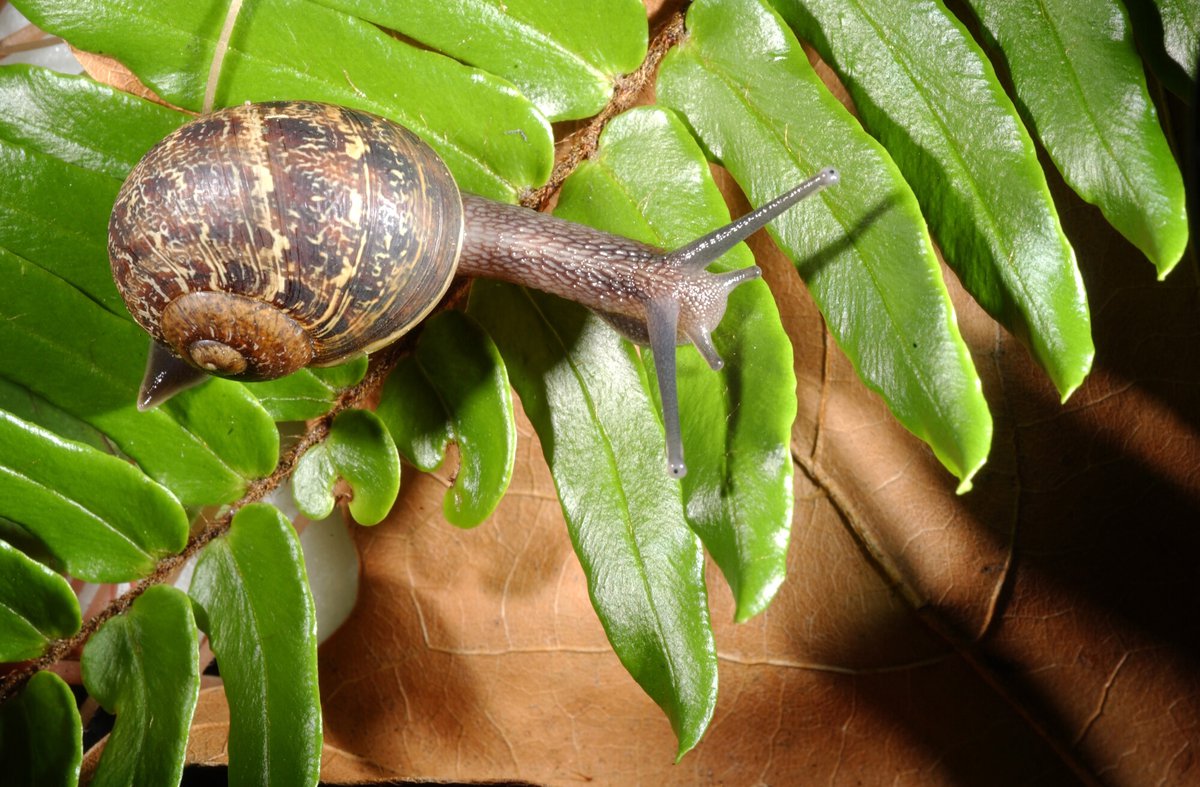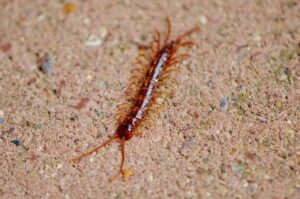Can You Eat Garden Snails? A Complete Guide
Have you ever wandered through your garden, noticed the snails slowly making their way across your plants, and wondered if these common garden creatures could be transformed into a gourmet meal? While escargot remains a delicacy in French cuisine, the question of whether you can safely eat the common garden snails found in your backyard is more complex than you might think. This comprehensive guide will explore everything you need to know about consuming garden snails, from identification and safety concerns to preparation methods and nutritional benefits.
Understanding Garden Snails in the United States
The snails you’re likely to encounter in American gardens are predominantly the common garden snail (Helix aspersa), also known as the brown garden snail or European brown snail. Originally from Europe, these mollusks were introduced to the United States in the 1850s, reportedly brought to California by French immigrants who intended to establish an escargot industry.
Today, garden snails are widespread throughout the United States, particularly in states with mild climates. While they’re often considered pests due to their voracious appetites for garden plants, they also represent a potential food source with a long history of human consumption.
Differences Between Garden Snails and Commercially Sold Escargot
Before you start collecting snails from your garden, it’s important to understand the key differences between backyard snails and the commercially available escargot:
The escargot served in restaurants typically comes from Helix pomatia (Roman or Burgundy snail) or farm-raised Helix aspersa (the common garden snail). While your backyard variety might be the same species as some commercial escargot, the crucial difference lies in their diet, environment, and preparation.
Commercial escargot snails are typically raised in controlled environments where their diet is carefully managed. They’re also subjected to a thorough purging process to eliminate potentially harmful substances from their systems. Your garden snails, on the other hand, may have consumed pesticides, toxic plants, or other harmful substances.
Safety Concerns: Can You Safely Eat Garden Snails?
The short answer is: yes, you can eat garden snails, but only with proper identification, collection, and preparation. Consuming improperly prepared garden snails can lead to serious health risks.
Potential Health Risks
The most significant concern when consuming garden snails is the risk of parasitic infection, particularly from the rat lungworm parasite (Angiostrongylus cantonensis). According to the Centers for Disease Control and Prevention (CDC), this parasite can cause eosinophilic meningitis, a potentially serious condition that affects the brain and spinal cord CDC Parasites Information.
Other risks include:
- Chemical contamination from pesticides or fertilizers
- Bacterial contamination
- Poisoning from toxic plants the snails may have consumed
- Potential allergic reactions
Wild vs. Farmed Snails
Wild garden snails can be consumed safely, but they require significantly more preparation than commercially farmed snails. Farmed snails are raised in controlled environments where their diet is monitored and restricted for a period before harvesting to clean their digestive systems. They’re also typically subjected to testing to ensure they’re free from parasites and harmful substances.
If you’re intent on eating garden snails from your yard, you’ll need to replicate this controlled feeding and purging process to ensure safety.
Proper Identification of Edible Garden Snails
Not all snails are created equal when it comes to edibility. The common garden snail (Helix aspersa) is generally considered edible when properly prepared, but there are numerous species of snails and slugs in the United States that should be avoided.
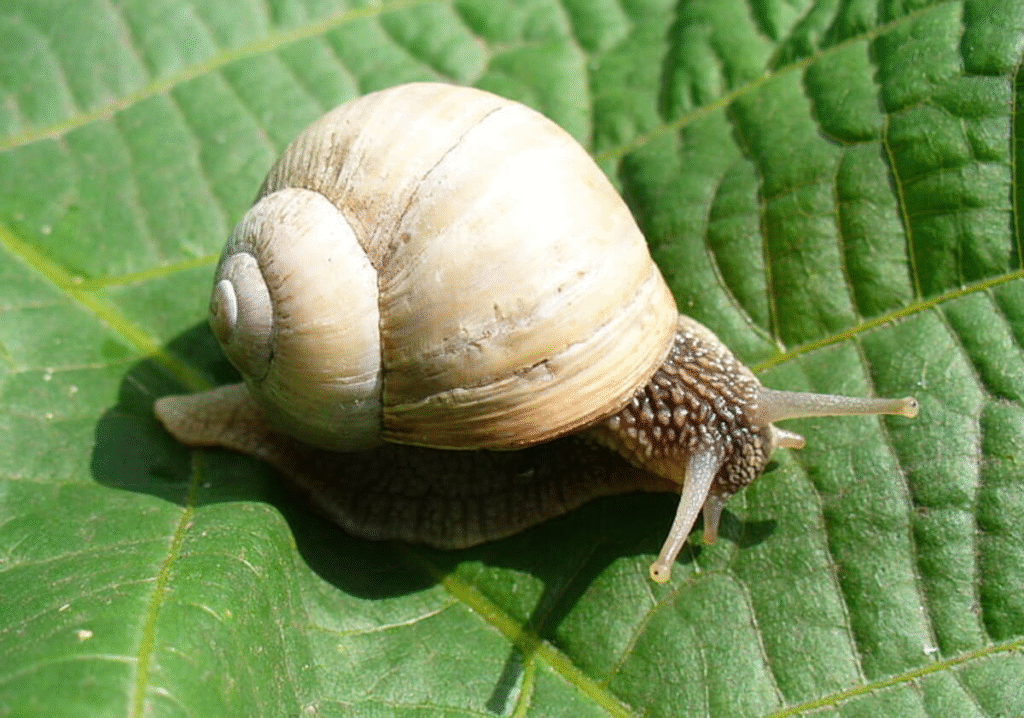
Characteristics of Edible Garden Snails
Edible garden snails typically have:
- A round or spiral shell
- Shell diameter of approximately 1-1.5 inches when mature
- Brown or tan coloration with darker spiral bands
- A body that’s gray to light brown
Snails to Avoid
You should avoid consuming:
- Slugs (which lack shells)
- Snails with unusual coloration or patterns
- Any snail species you cannot positively identify
- Snails collected from areas where pesticides or other chemicals have been applied
- Snails showing signs of disease or abnormality
When in doubt, it’s best to err on the side of caution and avoid consuming any snail you cannot confidently identify as safe.
The Collection and Preparation Process
If you’ve decided to try preparing garden snails, the process is labor-intensive but straightforward if you follow appropriate food safety guidelines.
Collection Guidelines
- Collect snails during periods of activity (usually early morning or evening, particularly after rain)
- Choose medium to large specimens
- Avoid snails from areas where pesticides or chemicals have been used
- Use gloves to prevent direct contact with potential parasites
- Place collected snails in a well-ventilated container with air holes
The Purging Process
This is arguably the most critical step in preparing garden snails safely. The purging process cleanses the snails’ digestive systems of potentially harmful substances:
- Initial Fasting: Keep the snails in a clean, ventilated container for 3-5 days without food to begin emptying their digestive tracts.
- Feeding Stage: For the next 7-10 days, feed the snails only safe, clean foods such as cornmeal, lettuce, or flour. This helps replace any potentially toxic substances in their systems with safe material.
- Final Fasting: Before preparation, allow the snails to fast for another 2-3 days to ensure their digestive tracts are completely empty.
Throughout this process, keep the container clean by removing waste daily and providing fresh water in a shallow dish.
Preparation Method
Once the snails have been properly purged, the preparation process includes:
- Thorough Washing: Rinse the snails several times in cold water, removing any mucus or debris.
- Blanching: Place the snails in boiling water for approximately 3 minutes, then transfer them to an ice bath to stop the cooking process.
- Shell and Intestine Removal: Remove the snails from their shells using a small fork or specialized tool. Carefully cut away and discard the intestine (the dark portion of the snail).
- Cleaning: Rinse the snails again in cold water, removing any remaining viscera.
- Cooking: Prepare the cleaned snails according to your preferred recipe, typically by simmering them in a seasoned broth before final preparation.
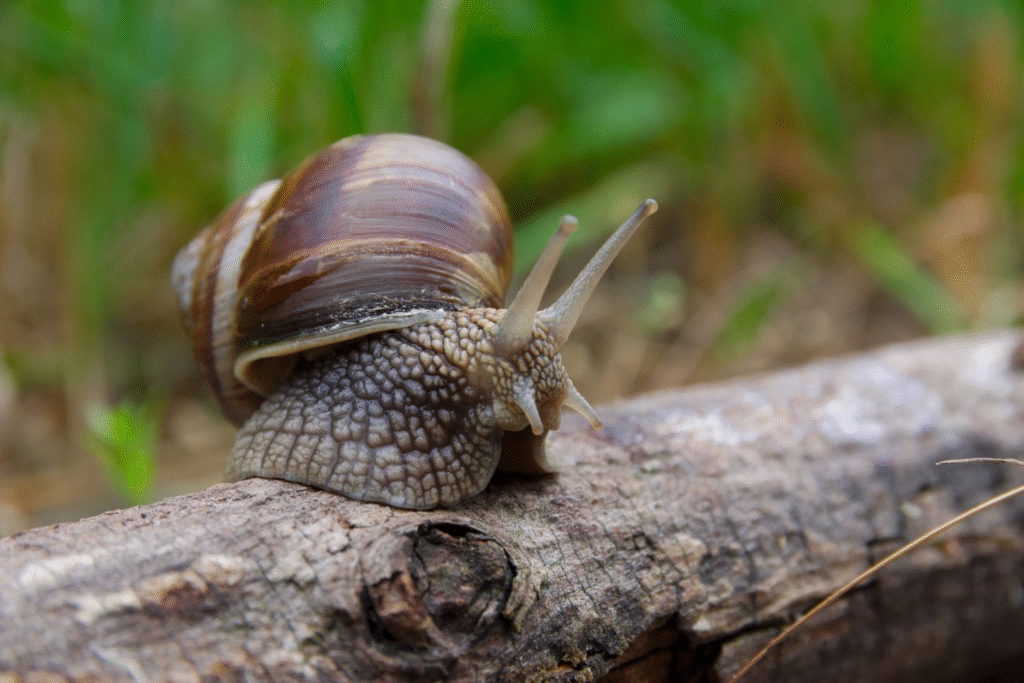
Nutritional Profile of Garden Snails
Garden snails offer a surprisingly impressive nutritional profile, which explains why they’ve been consumed by humans for thousands of years. They’re particularly valued for their high protein content and relatively low calories.
Nutritional Content per 100g of Cooked Snail Meat
| Nutrient | Amount | % Daily Value* |
|---|---|---|
| Calories | 90-100 | 4-5% |
| Protein | 16-18g | 32-36% |
| Fat | 1-2g | 1-3% |
| Carbohydrates | 2g | <1% |
| Iron | 3.5mg | 19% |
| Calcium | 170mg | 17% |
| Magnesium | 250mg | 60% |
| Vitamin A | 100 IU | 2% |
| Vitamin E | 5mg | 33% |
| Vitamin B12 | 0.5μg | 8% |
*Based on a 2,000 calorie diet
As you can see, snails are particularly rich in protein, iron, calcium, and magnesium, making them a nutritionally dense food source. They also contain essential amino acids and are relatively low in fat compared to many other protein sources.
Culinary Applications and Recipes
Once properly prepared, garden snails can be used in a variety of dishes, though they’re most commonly associated with French cuisine.
Traditional Preparations
The most famous preparation is undoubtedly the classic French dish escargot à la Bourguignonne, which features snails baked in a mixture of butter, garlic, parsley, and sometimes breadcrumbs. However, snails appear in many cuisines worldwide:
- In Italian cuisine, they’re often prepared with tomato sauce and herbs
- Spanish recipes might include snails with chorizo and spices
- In Greek cooking, snails are sometimes prepared with onions and vinegar
- Some Asian cuisines incorporate snails into soups and stir-fries
Flavor Profile and Cooking Tips
Properly prepared garden snails have a subtle, earthy flavor sometimes compared to mushrooms or clams. Their texture is similar to well-cooked mushrooms or mussels—firm but not chewy when prepared correctly.
Because of their mild flavor, snails readily absorb the flavors of the ingredients they’re cooked with, making them a versatile ingredient that pairs well with:
- Garlic, herbs, and butter
- White wine and light cream sauces
- Tomato-based sauces
- Strong aromatic herbs like thyme, rosemary, and tarragon
Legal Considerations and Regulations
Before you start your snail-harvesting adventure, it’s worth noting that there may be legal considerations depending on where you live:
- In some states, collecting certain snail species may be regulated or prohibited
- If you’re considering raising snails commercially, you’ll need to adhere to state and federal regulations regarding heliciculture (snail farming)
- The Food and Drug Administration (FDA) provides guidelines for commercially sold snails, though these don’t specifically address privately collected garden snails
According to the United States Department of Agriculture (USDA), commercial snail farming requires permits and must meet specific health and safety standards. If you’re simply collecting snails for personal consumption, these regulations may not apply, but it’s always worth checking local regulations USDA APHIS Import Information.
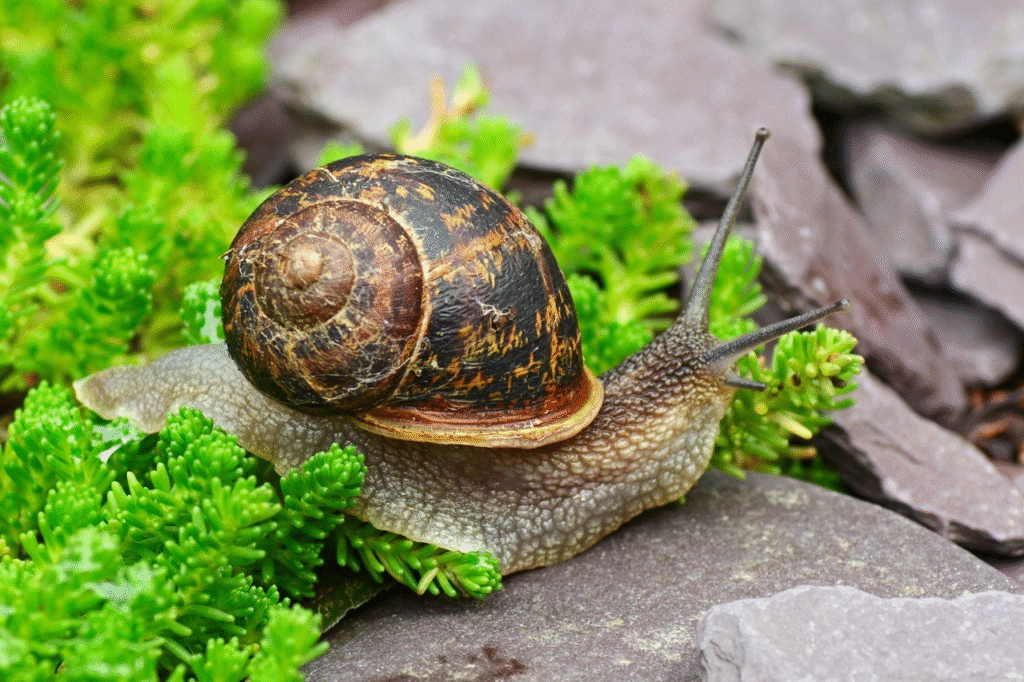
Sustainable and Ethical Considerations
From an environmental perspective, harvesting garden snails can be a sustainable practice when done responsibly:
Environmental Impact
- Garden snails are abundant in many regions and considered invasive pests in parts of the United States
- Harvesting them can provide a form of natural pest control without chemicals
- Their reproduction rate is high enough that responsible harvesting is unlikely to threaten populations
Ethical Considerations
While invertebrates like snails have simpler nervous systems than mammals, there is ongoing scientific debate about their capacity for pain and suffering. If you choose to harvest and prepare snails, doing so humanely is important:
- Ensure quick and humane methods of dispatch
- Avoid causing unnecessary stress during the collection and purging process
- Consider the ecological role snails play in your local ecosystem
Alternatives to Backyard Snail Harvesting
If the preparation process for garden snails seems too involved or you have concerns about safety, there are alternatives for those curious about trying escargot:
Commercial Sources
- Specialty food shops and some supermarkets sell canned or frozen escargot that has been professionally prepared
- Gourmet food suppliers offer fresh or frozen snails that have been raised specifically for consumption
- Some restaurants specialize in escargot and other snail dishes, offering a safer way to sample this delicacy
Snail Farming at Home
For the truly dedicated, heliciculture (snail farming) is a growing practice in the United States. By raising snails in a controlled environment, you can ensure they’re fed safe foods and properly purged before consumption.
Setting up a small snail farm requires:
- A secure enclosure to prevent escapes
- Proper substrate and hiding places
- Careful attention to humidity and temperature
- Regular feeding with safe, organic foods
- Knowledge of breeding and harvesting practices
Conclusion: Are Garden Snails Worth Eating?
After examining all aspects of consuming garden snails, the question remains: are they worth the effort?
The answer depends largely on your culinary adventurousness, patience, and commitment to proper preparation. While garden snails can indeed be safely consumed when prepared correctly, the intensive purging and preparation process requires significant time and attention to detail.
For most people, the convenience and safety assurance of commercially prepared escargot will outweigh the novelty of harvesting and preparing garden snails. However, if you’re interested in sustainable, local food sources and willing to invest the time in proper preparation, garden snails can provide a unique culinary experience and connection to traditional food practices.
Whether you decide to try preparing garden snails yourself or opt for commercially prepared alternatives, this humble mollusk offers a fascinating window into culinary traditions that span continents and centuries. As with any food source, respect for the ingredient and attention to proper preparation are key to enjoying this unique delicacy safely.
Remember that when in doubt about identification or preparation methods, it’s always best to consult with experts or choose commercially prepared alternatives. The FDA provides resources on food safety that may be helpful if you’re considering preparing snails at home FDA Food Safety Information.
